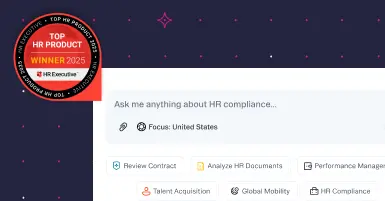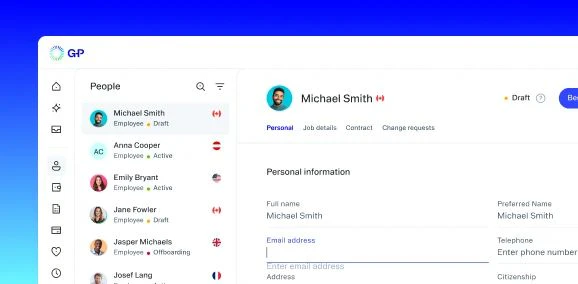يُعدتوجيه الاتحاد الأوروبي لشفافية الأجور تشريعًا بارزًا من المقرر أن يعيد تعريف المساواة بين الجنسين في الأجور عبر أماكن العمل في الاتحاد الأوروبي. يُعد التوجيه معلمًا مهمًا في الرحلة نحو المساواة بين الجنسين في الأجور والعدالة للعمال، حيث يهدف إلى الحد من الفجوة في الأجور بين الجنسين من خلال تحسين شفافية الأجور وزيادة التزامات الإبلاغ.
للاستعداد لهذه اللوائح الجديدة، تحتاج الشركات في جميع أنحاء الاتحاد الأوروبي إلى فهم التحديات والآثار والفرص التي سيجلبها توجيه شفافية الأجور إلى سوق العمل. في ندوة عبر الإنترنت أجرتها G-P مؤخرًا مع شركة إيه دي بي وبليك روتنبرغ، ناقش أعضاء اللجنة ستيوارت هيلاند، شريك في بليك روتنبرغ، وميغ فيريرو، نائب الرئيس، مساعد المستشار العام في شركة إيه دي بي، بعض الجوانب الرئيسية للتوجيه وناقشوا تأثيره المحتمل على الشركات والعمال. لقد أعدنا تطبيق بعض القضايا الأكثر إلحاحًا في التوجيه لمساعدة الشركات على الاستعداد لتلبية متطلبات أقوى جديدة للإبلاغ عن الأجور وغيرها من المعايير التي يفرضها التشريع.

- تطوير بنية تحتية للبيانات لتلبية متطلبات الإبلاغ عن الأجور.
- استخدم تحليلات البيانات لتبسيط تقارير الأجور.
- تنفيذ خطة تعليمية حول شفافية الأجور والمساواة للموظفين.
- احتفظ بسجلات ووثائق دقيقة حول كيفية اتخاذ قرارات تعويض الرواتب والعلاوات وإجمالي المكافآت.
- التصرف بسرعة وإجراء تقييم الجاهزية لتحديد خط العمل الأول.

#1 سيتطلب توجيه شفافية الأجور من الشركات إجراء تحليلات للفجوات في الأجور بين الجنسين والإبلاغ عن الفجوات في الأجور بين الجنسين.
لإجراء تحليل الفجوة في الأجور وإعداد تقرير حول الفجوات في الأجور بين الجنسين، يمكن للشركات البدء بجمع وتحليل البيانات ذات الصلة بشأن رواتب الموظفين والعلاوات والمزايا لتحديد أي تفاوتات بين الجنسين. ستكون هناك حاجة إلى تنفيذ أنظمة تحليلية للتقييم الوظيفي وهياكل الرواتب للمساعدة في ضمان المساواة في الأجور مقابل العمل المتساوي. ومن الأمثلة على ذلك تنفيذ نطاقات الرواتب أو نطاقاتها لكل منصب وظيفي أو درجة/مستوى على مستوى الشركة. من خلال إنشاء نطاقات رواتب واضحة وموحدة بناءً على حجم الوظيفة، يمكن لفرق الموارد البشرية ضمان حصول كل موظف على تعويض عادل.
أفاد ميغ فيريرو من إيه دي بي بأن المراجعة والتعديل المنتظمين لنطاقات الرواتب بناءً على اتجاهات السوق واعتبارات حقوق الملكية الداخلية سيساعدان الشركات على أن تكون أكثر استباقية في سد الفجوات في الأجور. وأشار فيريرو قائلاً: "بالنسبة لسياسات المساواة في الأجور، تأكد من توثيق نطاقات الأجور الخاصة بك لمراكزك وأدوارك، والعملية والتحليل الذي كان مرتبطًا بنطاقات الأجور هذه التي يتم تعيينها بحيث يمكنك الرجوع إليها والحصول على الوثائق اللازمة لدعم القرارات التي تم اتخاذها". كما سيكون الإبلاغ عن المكافآت وإجمالي المكافآت أمرًا أساسيًا للمضي قدمًا، حيث يجب على الشركات أن تتسم بالشفافية بشأن كيفية منح حوافز الأداء هذه عبر الأدوار والأجناس.
سيتعين على الشركات نشر أجزاء كبيرة من استراتيجية المكافآت الخاصة بها وإتاحتها للموظفين لأنه يتعين عليك مشاركة المعلومات حول كيفية تحديد الأجور وكيفية إدارتها وتقدمها، وهذا ليس مجرد أجر أساسي، بل إنه عبر نطاق المكافأة
Stuart Hyland
شريك، بليك روتنبرغ
#2 إذا تجاوزت فجوة الأجور بين الجنسين 5%، يجب على الشركات إجراء تقييم مشترك للأجور مع ممثلي العمال.
عند معالجة فجوات الأجور بين الجنسين التي تتجاوز 5%، يجب على الشركات وضع خارطة طريق شاملة تجمع بين الاستراتيجيات القائمة على البيانات والتدابير الاستباقية لتعزيز المساواة في الأجور والمساواة بين الجنسين. تقول هيلاند: "يجب على صاحب العمل مشاركة المعلومات حول كيفية تحديد الأجر وإدارته وتقديمه مع كل موظف، ويجب أن تكون المعايير موضوعية ومحايدة من حيث النوع الاجتماعي".
تتمثل الخطوة الأولى في إجراء تحليل شامل لبيانات الرواتب لفهم أصل وسبب الفجوات في الأجور بين الجنسين: ما هي السياسات والإجراءات الخاصة بتحديد الرواتب وكيف يمكن نقلها عبر المؤسسة لخلق المزيد من المساواة والفرص؟ يساعد وجود خارطة طريق موثقة الفرق على تحديد بعض المشكلات الشائعة التي يجب معالجتها عند محاولة تحقيق المساواة في الأجور، بما في ذلك:
- الفصل المهني، حيث يتم تمثيل جنس واحد بشكل غير متناسب في أدوار ذات أجر أقل أو أعلى.
- الفوارق في فرص التقدم الوظيفي والترقية، حيث يتم النظر في جنس واحد بشكل أكثر تكرارًا.
- انعدام الشفافية في هياكل الرواتب وقرارات الأجور في جميع أنحاء المؤسسة.
# ستكون أدوات تحليل3 البيانات أساسية لتبسيط تقارير الأجور وتوجيه استراتيجيات التنفيذ للتوجيه.
يعني تنفيذ توجيه الاتحاد الأوروبي لشفافية الأجور أن الشركات تحتاج إلى نهج استراتيجي يتضمن تحليلًا شاملاً للبيانات وآليات الإبلاغ. يمكن للشركات الاستفادة من أدوات تحليل البيانات لتبسيط تقارير الأجور من خلال مركزية بيانات الرواتب وإجراء عمليات تدقيق منتظمة للأجور وتحديد الفوارق في الأجور. بالإضافة إلى ذلك، يمكن أن توفر أدوات تحليل البيانات رؤى قيّمة حول هياكل الأجور والاتجاهات وتوجيه الإجراءات التصحيحية لضمان الامتثال لمتطلبات الشفافية الخاصة بالتوجيه.
بخلاف متطلبات أصحاب العمل من المقاولين الفيدراليين، لا يوجد قانون فيدرالي في الولايات المتحدة لشفافية الأجور. ويتمثل الاتجاه الحالي في أن تتبنى الولايات إصداراتها الخاصة. ونشهد أيضًا تطورات تتعلق بالمتطلبات التي
Meg Ferrero
نائب الرئيس، مساعد المستشار العام، إيه دي بي
#4 يمكن أن تسهل خطة التعليم المتعلقة بشفافية الأجور التنفيذ الناجح للتوجيه.
يجب أن تركز جلسات التعليم والتأثير لفرق الموارد البشرية والقيادة التنفيذية على شرح متطلبات التوجيه، مثل الإبلاغ الإلزامي عن فجوة الأجور، ووصول الموظفين إلى معلومات الأجور، والتدابير اللازمة لمعالجة التفاوت في الأجور. تنصح هيلاند الشركات بتسليط الضوء على الآثار المترتبة على الامتثال والمخاطر القانونية المحتملة وفوائد تعزيز ثقافة الأجور الشفافة. يقول هيلاند: "سيكون هذا تغييرًا ثقافيًا كاملاً، وليس مجرد تغيير في الممارسة للشركات فحسب.
إدارة أفضل المواهب العالمية وضمان الامتثال المستمر لـ G-P .
يُعد البقاء على اطلاع باللوائح المتطورة أمرًا بالغ الأهمية من أجل سلاسة العمليات والنمو. لمعرفة كيف يمكن لشركتك أن تتفوق على متطلبات شفافية الأجور الجديدة في الاتحاد الأوروبي، شاهد الندوة الكاملة عبر الإنترنت عند الطلب.
لا تدع ضغط الامتثال يبطئ خططك للنمو العالمي. تضمن حلول صاحب العمل المسجل لدينا (EOR) الامتثال المستمر للقوانين واللوائح المتطورة لتخفيف المخاطر وحماية النجاح المستقبلي. لمزيد من المعلومات حول كيف يمكن لشركة G-P مساعدتك في تعيين وتأهيل وإدارة الفرق العالمية في أكثر من 180 دولة، بسرعة وامتثال، اتصل بنا اليوم أو احجز عرضًا توضيحيًا.



















